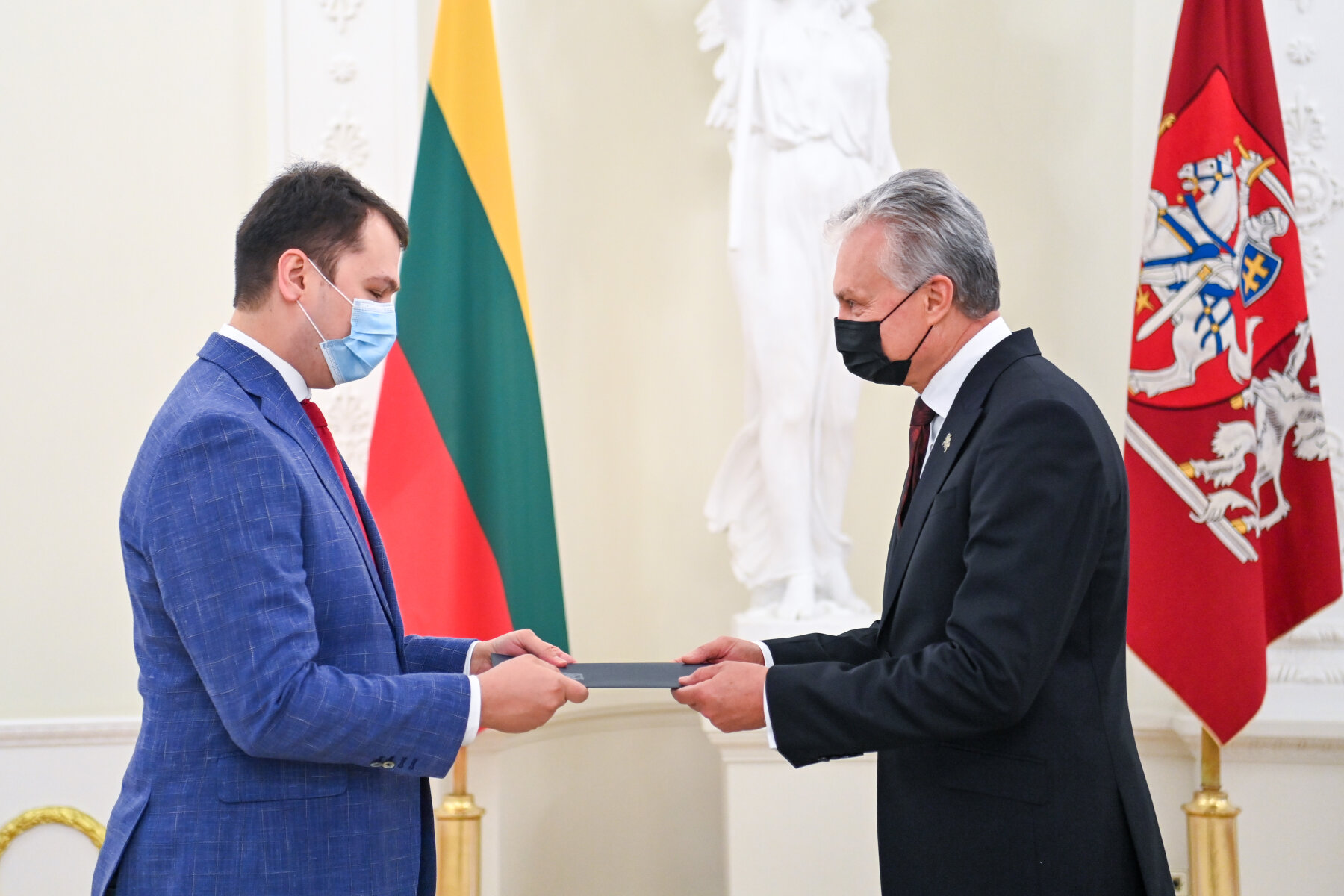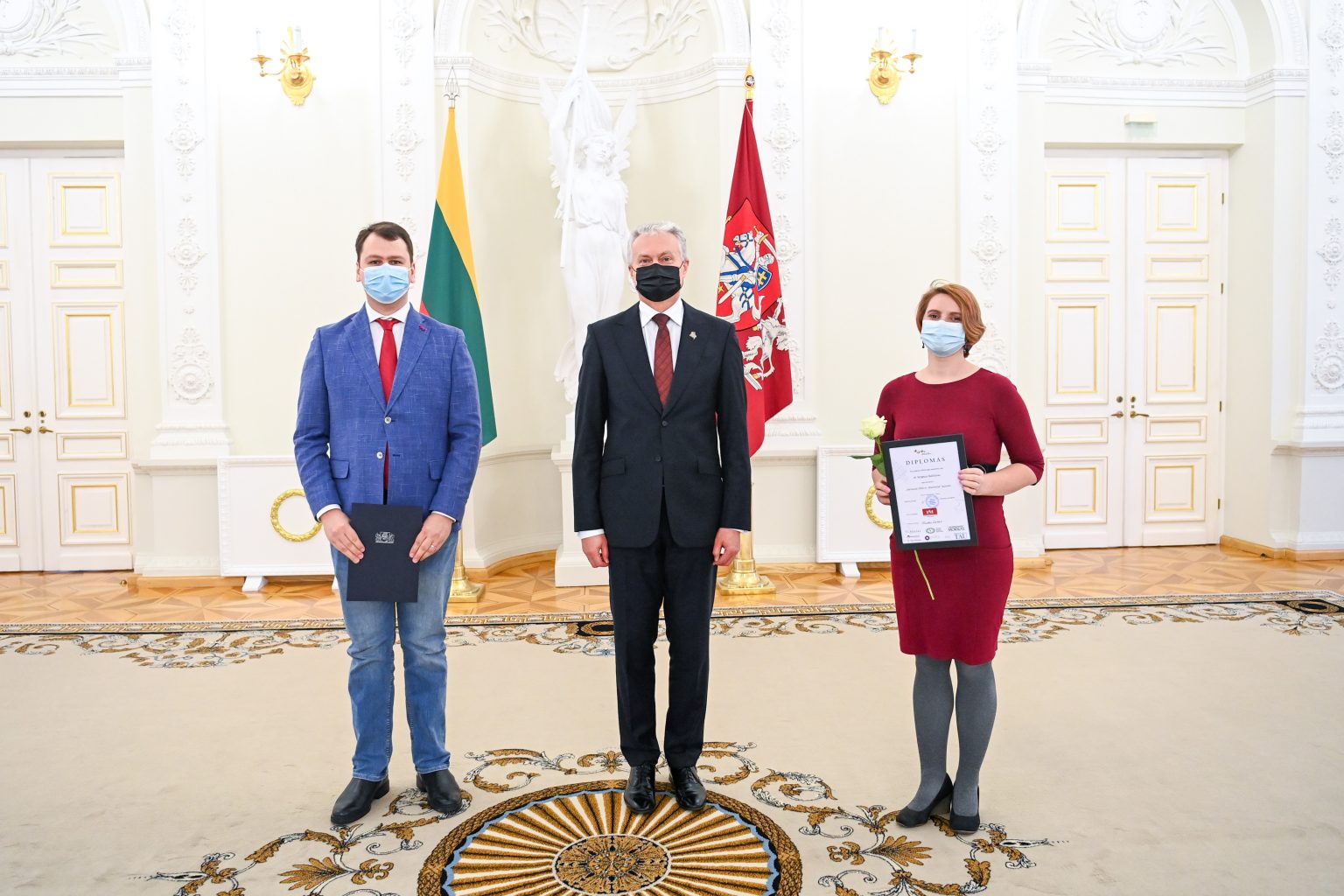Four young researchers from Vilnius University (VU) became the winners of the best 2020 dissertation competition. The winners were awarded by the President of the Republic of Lithuania Gitanas Nausėda on Wednesday.
71 scientific works were offered for the competition organized by the Lithuanian Union of Young Scientists: 39 dissertations in the field of nature, technology, medicine and health, agricultural sciences and 32 dissertations in the humanities and social sciences.
The winners of the competition were the authors of the 10 best dissertations, including four young researchers at VU.
The aim of this competition is to encourage doctoral students to prepare high-level dissertations that deserve recognition not only in Lithuania but also around the world, to promote inter-institutional and interdisciplinary cooperation, to increase the motivation of Lithuanian young researchers to carry out scientific activities of the highest quality and importance to society.
Segejus Balčiūnas in the field of physics was awarded best dissertation award of 2020 for dissertation: Broadband dielectric spectroscopy of some perovskite compounds.
The work of S. Balčiūnas presents the materials of perovskite structure ABX3, which were studied in a wide range of 10-3–1011 frequencies and 100 - 500 temperatures. The effect of a thin layer of potassium niobate (KNbO3) on barium titanate (BaTiO3) crystallites on the dielectric properties of BaTiO3 was investigated.
It has been observed that the value of spontaneous polarization in such a core-shell structure increases. One possible reason is the stresses on the surface of the BaTiO3 crystallites due to the mismatch of the crystal lattice with the KNbO3 lattice.
The dissertation also deals with very popular substances - halide perovskites (CH3NH3PbX3 (X = I, Br, Cl)). The author proves that these materials are not ferroelectric, so they cannot contain domain walls, and high efficiency is associated with a relatively high value of dielectric permittivity, which effectively shields defects. In the study of halide perovskites, it was observed that by changing the cation of position A CH3NH3 to (CH3) 2NH3, the stability of these substances increases.
In addition, the effect of the (CH3) 2NH3 cation on the dielectric properties of the material (CH3NH3)1-x((CH3)2NH3)xPbBr3 was investigated. A small amount of (CH3) 2NH3 cation in the (CH3NH3)1-x((CH3)2NH3)xPbBr3 crystals leads to the phase transition broadening and a shift to the lower temperatures. A higher amount of (CH3) 2NH3 cations concentration results in significant broadening and suppression of the tetragonal phase, due to the frustrated state.

The President awards Sergejs Balčiūnas. Office of the Presidency / Photo by Robertas Dačkus

Office of the Presidency / Photo by Robertas Dačkus
